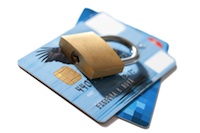It isn’t often that after a data breach involving credit cards, that the public is also given a marker on the exact amount money lost by consumers as a result. Thanks to the FBI however, we now have a better understanding of what 60,000 stolen credit cards translates to financially, as this data was included in their investigation notes while working the Stratfor case.
 The last time the public had something close to actual stats from the source, we learned that the TJX breach cost Visa $68 million in 2007, two years after the TJX network was compromised by Albert Gonzalez. Yet, those were Visa’s estimates. Now, in the aftermath of the Stratfor breach, the FBI has attributed $700,000 worth of charge fraud to the 60,000 credit card records taken during the network compromise.
The last time the public had something close to actual stats from the source, we learned that the TJX breach cost Visa $68 million in 2007, two years after the TJX network was compromised by Albert Gonzalez. Yet, those were Visa’s estimates. Now, in the aftermath of the Stratfor breach, the FBI has attributed $700,000 worth of charge fraud to the 60,000 credit card records taken during the network compromise.
It was in December of 2011 that AntiSec supporters targeted Stratfor, walking away with 860,160 usernames (email addresses) and passwords, and 60,000 credit card records. Earlier this week, the FBI charged Jeremy Hammond with the Stratfor attack, slapping him with one count of computer hacking conspiracy, one count of computer hacking, and one count of conspiracy to commit access device fraud. Each count carries a maximum sentence of 10 years in prison.
While making the case for Hammond, the FBI’s Milan Patel told a federal judge that between December 6, 2011, until early February 2012, “at least $700,000 worth of unauthorized charges were made to credit card accounts that were among those stolen during the Stratfor Hack.”
A note on that tidbit explained that the figure “does not reflect any of the charges that may have been incurred on cards associated with the Stratfor Hack for which records have not yet been reviewed.”
In addition to the credit fraud, the FBI said that Stratfor is reporting $2 million in losses, which combining the recovery and lost business claims. Part of that is the monitoring that Stratfor paid for in order to protect those who had their credit card details exposed.
Oddly, some of those that were exposed by the Stratfor breach have seen little value in the protection offered, including one person whom I spoke with that had three different cards exposed in the breach. At no time was he warned that his information was publically available, and it was only after I contacted him that he was able to take action.
Again, it’s rare to see an exact figure that is closer to reality than industry estimations when it comes to fraud after a data breach involving credit cards.
With TJX breach resulting in 45 million stolen card numbers and $68 million in fraud, that estimate just seemed off. At the same time, given the high numbers that have floated around in the previous years, the idea that 60,000 stolen cards equates to nearly $1 million in fraud seems realistic, but it’s still unsettling.















